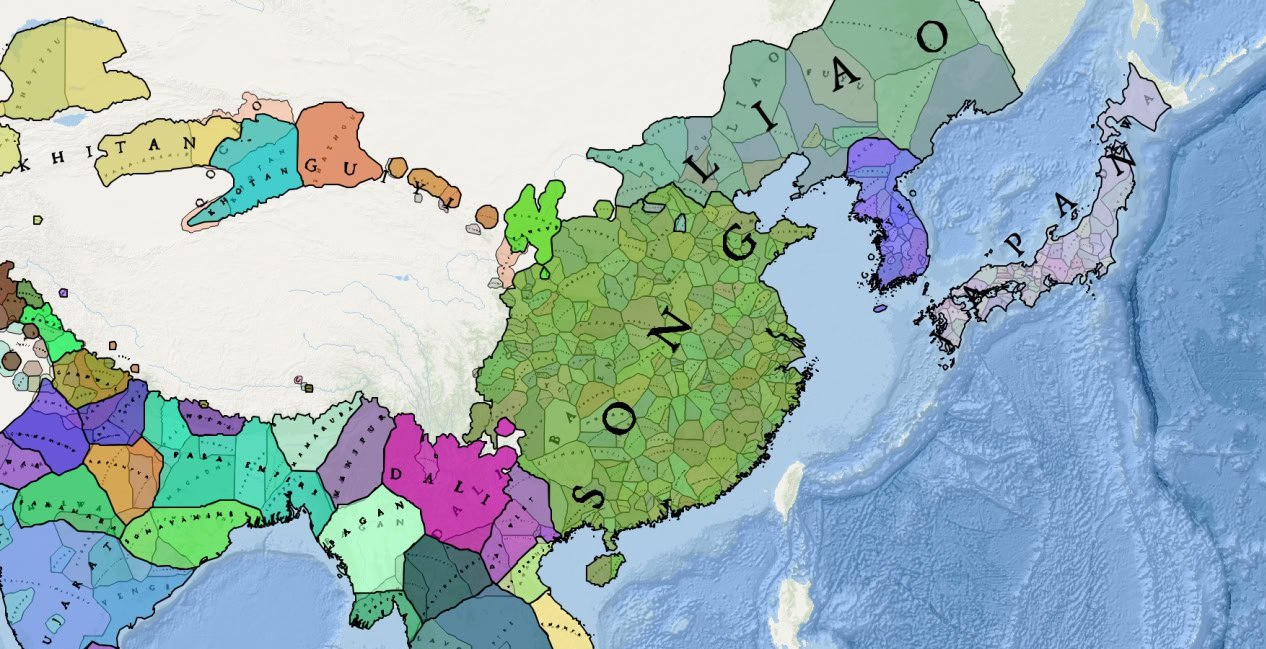The World Needs Gen-AI World Maps: How the Global South Uses Knowledge Tools That the West Takes For Granted
The Power of Large Datasets in Understanding Societal Trends
What new tools might help us illuminate “big picture” empirical questions about society? And, more importantly, why pursue this kind of knowledge, at all? The site Our World in Data curates large amounts of quantitative data on everything from literacy rates to death rates from lead exposure, throughout time and geographic space. It presents this data in compellingly lucid interactive world maps, historical data visualizations, and charts, which have, unsurprisingly, been widely used by academics, classroom teachers, policymakers, and everyday curious people.
Personalizing Data Exploration Through Conversational AI
But, what if the user was able to personalize their experience with these kinds of large datasets using a conversational AI interface? One such query might be, “can you show me a map of carbon emission rates by the top 4 countries in North America and Europe in the year 1900?’ Or, “highlight in blue, countries where there is not currently a positive correlation between public education spending and economic outcomes.” It is clear that the utility of such technology for learning and research is far-reaching, especially when paired with machine learning in historical research, natural language processing, or topic modeling.
The Expanding Role of Generative AI in Knowledge Creation
The obvious and broad argument for advancing map-based, conversational genAI technology is that it will further add to the world’s computational toolbox, increasing the potential for knowledge acquisition and creation. It will become part of a short, but highly successful digital lineage that includes the pocket calculator, personal computer, Internet, smartphone, and most recently, generative text-based chatbots used to support historical analysis and digital humanities research.
Potential Risks and Ethical Considerations
An academic might receive unexpectedly novel insights for a research question with this curated, highly-visual geographic data; Youtubers could generate instant visualizations while doing a live-streamed podcast about politics. Would there be hallucinations, and would the possibility exist to use the technology for ill? Of course. All similar tech artifacts ought to be judged with a cost-benefit analysis, and one can make a strong argument that the benefits would come out on top.
Global Usage Trends of AI Technologies
Unfortunately, there isn’t much information on the exact demographics of Our World in Data users. But, there is slightly more data about user demographics for technologies like Chatgpt at the country level. According to a BCG poll (2023), the leading reason why people in Germany,Australia, the UK, and the US used the technology was “just to play around with it.” In contrast, countries like China, India, Thailand, and the Philippines used it to assist in research or to find information.In the same poll, those living in China, Indonesia, and Saudi Arabia showed the most excitement for AI; while Australia, France, the UK, and Sweden were the most apprehensive. It can’t help but be tempting to diagnose the “concerned” nations with some degree of negativity bias. Much like fish who have never left water, the average resident of one of these countries is likely so unaware of how culturally and technologically-thriving their milieu is, that the potential downsides of AI come to mind with the most ease.
The poll included 21 countries; only one of them from Africa – Morocco – none from the Sub Saharan region. With roughly 1.24 billion people (World Bank, 2024), Sub Saharan Africa makes up about 15.5% of the planet’s population, where 35% of people live in extreme poverty –less than $2.15 per day (World Bank, 2022). Despite this, it is glaring that development is on the rise there. The Global Innovation Index ranks the knowledge and technological output of 132 countries worldwide. And, even though Sub Saharan African countries (with the exception of South Africa) came out in the bottom half of 2023’s list, progress from the year before is what counts.
The Global Innovation Index and h-Index: Metrics of Progress
The GII measures numerous facets to arrive at an overall index rank. One of the most intriguing is a country’s “h-index,” or how many times a researcher’s paper has been cited by other researchers, which speaks to the impactfulness of their work.The top five Sub Saharan African countries in the index (South Africa, Botswana, Senegal, Namibia, and Ghana) had an average h-index increase of 8.18% from the prior year. This steady, upward h-index holds true for all countries since 2019, and is likely also true for otherSub Saharan countries further down the list. To put it into perspective, Singapore, a still rapidly-growing, but already technologically-advanced country had an h-index increase of just 9.18% from the previous year. Ghana, on its own, far surpassed Singapore’s year-to-year citation increase, at 12.57%.
Potential of Generative AI Maps for Global Development
The evidence is clear that people living in less economically-viable countries are not only interested in new knowledge-based tools to get ahead, they are making excellent use of them. If the rest of the world cares about the h-indices in places like Ghana, or the GII rankings for theGlobal South generally, the implementation of AI generated historical maps, interactive world history timelines, and digital history tools might be the next logical step. These genAI maps, together with the vast informational supply found on a resource like Our World in Data have great promise.
They could improve resource allocation to the most in-need regions; redefine urban planning, and deepen understanding of political issues in different areas.Some might see this as a cliched perspective – one of globalist liberalism, or of techno-optimism. That’s fine. No matter what one calls it, the evidence shows that when a Namibian, a Bangladeshi, or someone from the Philippines gains access to tech conveniences that westerners forget about two weeks after discovering them, things improve for all – however incrementally.
As Max Roser (founder of Our World in Data) states: The world needs ideas and innovation to make progress. Creative and talented people are everywhere, but the opportunity to develop is limited to only a small number of well-off children. The world loses out as a result…For both reasons – personal opportunity and social benefit – we should make sure that all talented people have the chance to develop new ideas…”.


.png)






